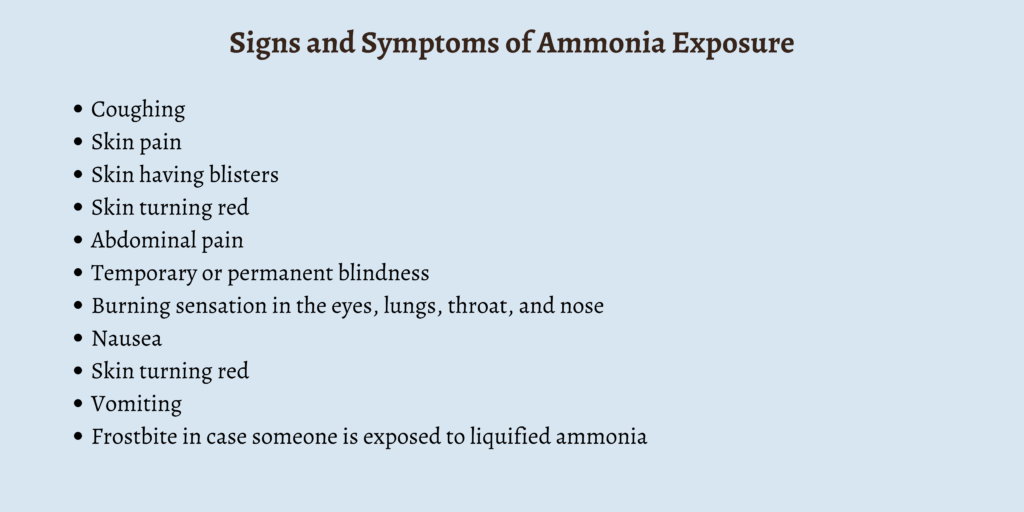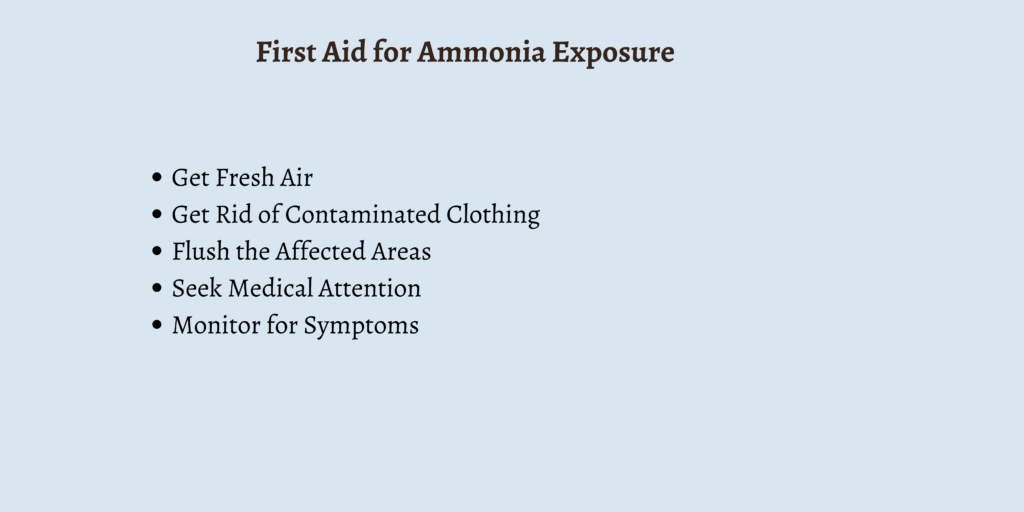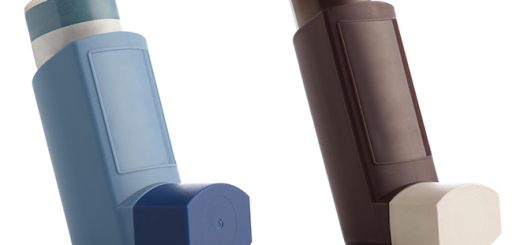First Aid for Ammonia Inhalation: 5 Treatment Tips
Did you know human activity produces ammonia, which is a clear and colorless gas that occurs naturally? It’s a chemical that is quite commonly used in agricultural and industrial settings.
One could be exposed to ammonia through industrial and household cleaners that contain ammonia, as well as through the environment. As per the Centers for Disease Control and Prevention (CDC), there are certain factors that determine the level of ammonia exposure, such as:
- The dose of ammonia
- The type of work
- Duration of the exposure
Some people are at a higher risk of being exposed to ammonia due to their work, examples of which include:
- Agricultural workers who make use of soil fertilizer.
- Those working in the field of petroleum refining
- Workers who use commercial refrigerant for food processing or those who make ice or remain next to de-icing operations and cold storage
- Miners or those who work in metallurg
- Industrial workers who manufacture solvents, fibers, plastics, rubber, fertilizers, or other chemicals
The risk of ammonia exposure increases during the cooler months. Do you know how to help a person if they are exposed to ammonia? If you have always wanted to know about it, then keep reading because that’s what we’re going to cover today.
In this article, we will discuss the signs of ammonia exposure and the first aid involved
Signs and Symptoms of Ammonia Exposure

If someone has asthma or other chronic lung diseases, they could be more sensitive to ammonia inhalation than others. When higher levels of ammonia are involved, the signs and symptoms could include:
- Coughing
- Skin pain
- Skin having blisters
- Skin turning red
- Abdominal pain
- Temporary or permanent blindness
- Burning sensation in the eyes, lungs, throat, and nose
- Nausea
- Skin turning red
- Vomiting
- Frostbite in case someone is exposed to liquified ammonia
First Aid for Ammonia Exposure

The following are some of the steps to follow when someone is exposed to ammonia:
1. Get Fresh Air
The very first thing to do once you’re exposed to ammonia is to get fresh air. This is primarily because ammonia inhalation can lead to numerous health issues, such as coughing, breathing difficulties, and irritation to the nose and eyes.
One can reduce the risk of health problems by going away from the area where the ammonia release took place and heading towards fresh air outdoors. In addition to an outdoor area, you could also go to a place that has proper ventilation.
Once you head outdoors, make sure to stay in that particular location till you no longer feel the symptoms of ammonia exposure.
2. Get Rid of Contaminated Clothing
In case your clothes have been contaminated with ammonia, get rid of them as soon as possible. The reason behind this is that ammonia can keep releasing gas which you can still end up inhaling.
Also, since ammonia exposure can irritate the skin, getting rid of the contaminated clothes can save you from further exposure and reduce the risk of your skin feeling irritated. Therefore, if your clothes have been contaminated due to ammonia exposure, switch to clean clothes right away.
If changing your clothes immediately is not possible, then just cover your exposed skin with a towel or any other piece of clothing to prevent further exposure.
Contaminated clothes should not be thrown away in the regular trash. Instead, place them in bags where no one can touch them and get affected by ammonia. Step away from the used items as far as you can.
3. Flush the Affected Areas
If someone’s eyes or skin have been exposed to ammonia, those areas need to be flushed with water for a minimum period of 15 minutes. This needs to be done so that the chemical gets flushed out of the affected areas and the risk of further damage is reduced.
The water not only helps reduce the risk of eye damage, burns, or skin irritation but also aids in neutralizing the effects of ammonia. If possible, take a shower immediately, and if taking a shower isn’t possible at the moment, make use of an eyewash station if it’s available.
Remember to keep flushing the affected region for a minimum of 15 minutes or until you believe the chemical has gone away from the affected areas.
Before washing the rest of your body, wash your hair, face, and hands. Make use of mild soap and lukewarm water. A plain water rinse is what you need, and remember to not let the water go into your mouth, nose, or eyes.
After drying your face, tilt your head back, and once you’re done drying your hair, dry down the rest of your body. Make use of anything that could soak up water. If you live in a place where the temperature is too low, get into clean clothes as soon as possible so as to prevent hypothermia.
4. Seek Medical Attention
Although it’s possible that someone who has experienced ammonia exposure could feel relatively fine, it’s important to get medical attention immediately after the exposure.
The reason this is crucial is because the effects of being exposed to ammonia can often take a while to appear, which is why you should get checked for any potential health issues or injuries.
Whether it’s you or someone else who has been through ammonia exposure, call the emergency medical services immediately, regardless of whether the symptoms are present or not.
5. Monitor for Symptoms
There are certain common symptoms of ammonia exposure, such as headaches, coughing, irritation in the skin and eyes, and breathing problems. If you or someone else experiences any of these symptoms, the emergency services should be contacted immediately.
Therefore, if you have been exposed to ammonia, keep monitoring these symptoms, and if they occur, get in touch with the emergency medical services immediately.
FAQs
What are the harmful effects of ammonia?
If someone comes in contact with high levels of ammonia, it could lead to irritation and burning in the eyes, lungs, throat, mouth, and skin.
Is ammonia toxic or poisonous?
Yes, ammonia is a toxic substance.
How much ammonia is toxic to humans?
When it comes to ammonia toxicity, concentrations of 2500 to 4500 ppm could be fatal to a human being, and if it’s over 5000 ppm, it can lead to rapid respiratory arrest.
How do you flush ammonia out of your body?
In order to flush ammonia out of your body, the treatment could involve medications such as lactulose, a synthetic sugar which aids in reducing the levels of ammonia in the blood.
Conclusion
Being exposed to ammonia can lead to major health issues, which is why it’s very vital to know what to do in case of ammonia exposure. Ensure to flush the affected regions, get rid of the contaminated clothing, and get medical attention.
Just follow all the tips mentioned above and you will be able to help yourself as well as someone else if they are ever exposed to ammonia.





